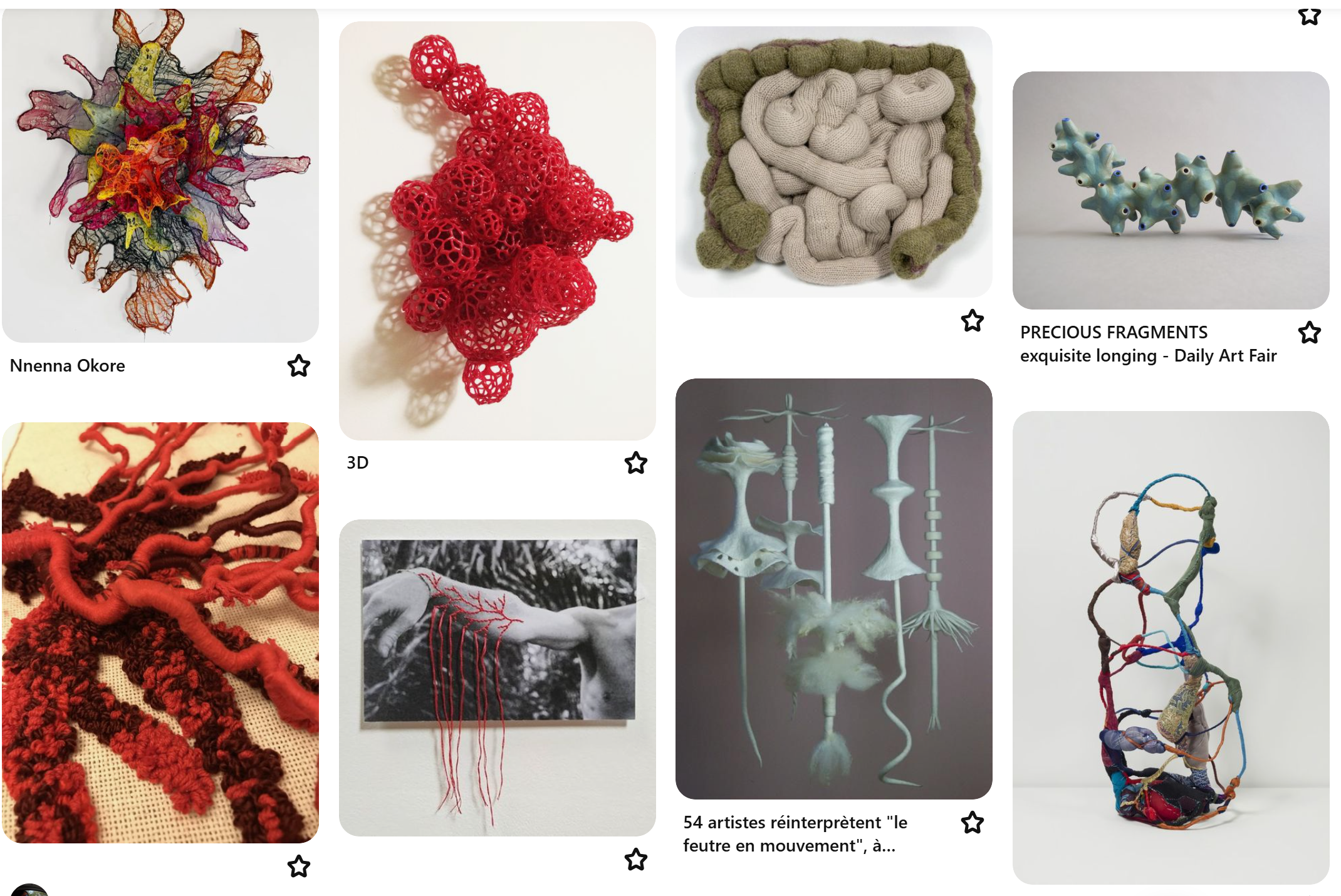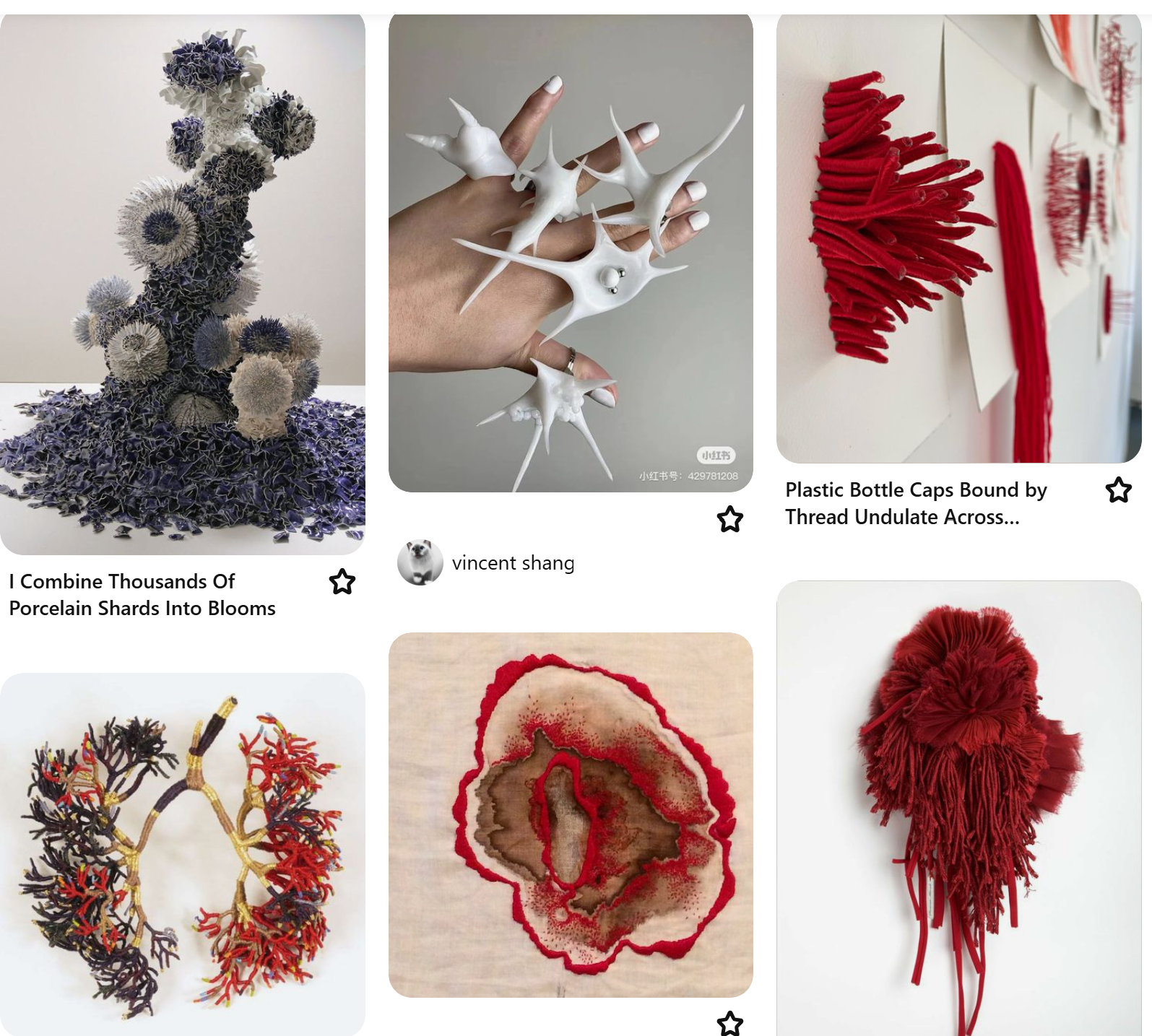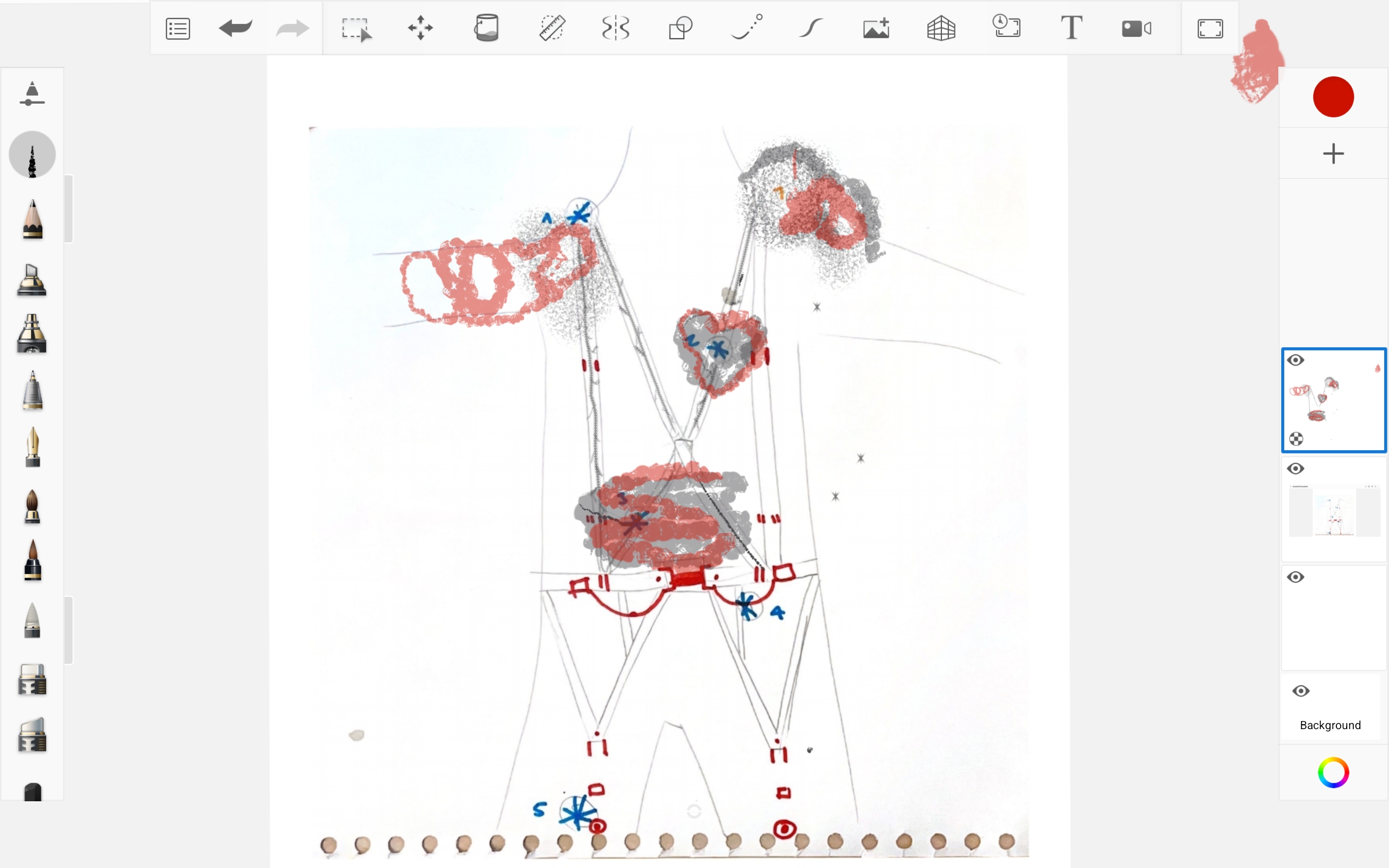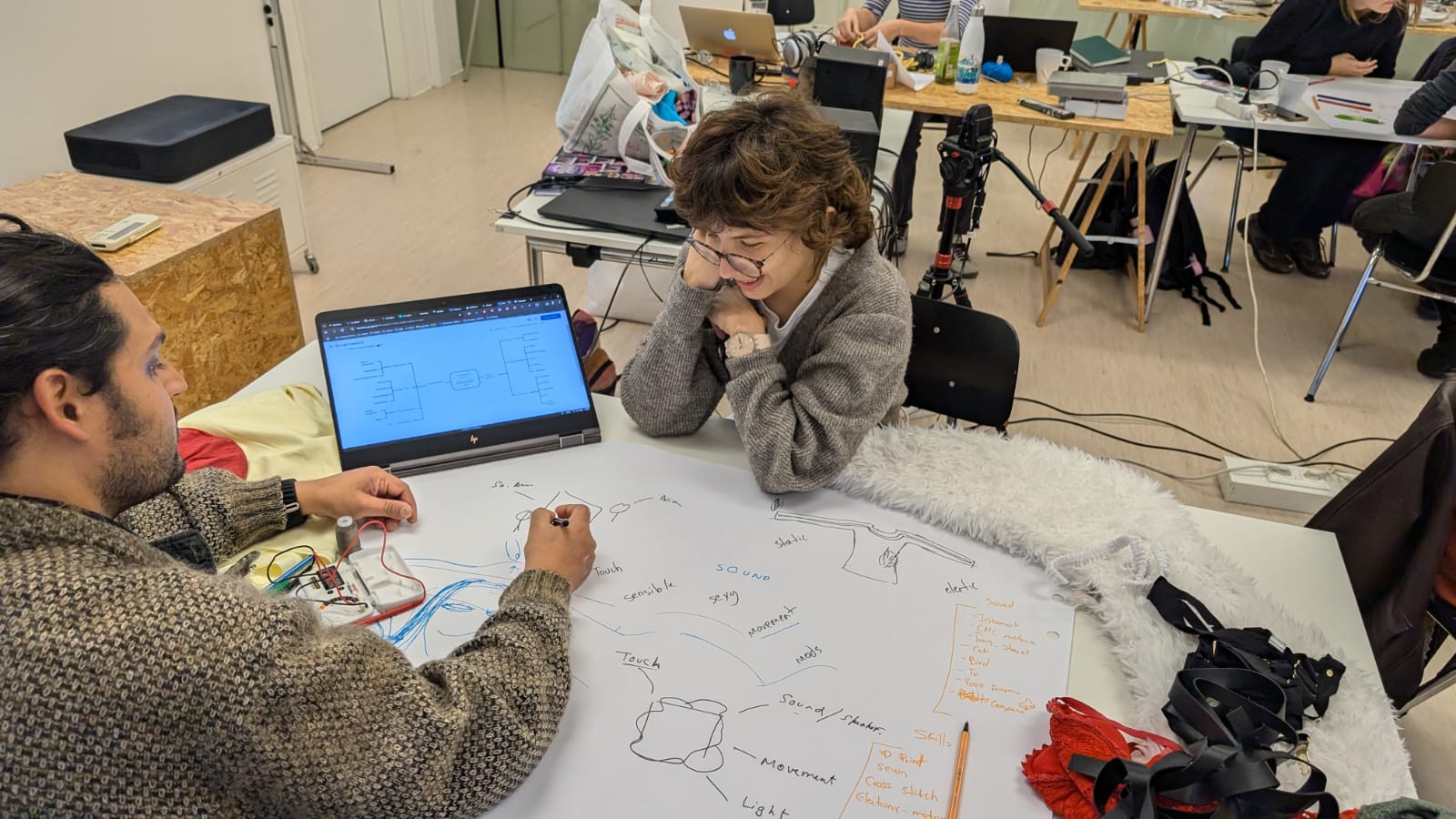Extended Body is a Performance Sound Body Instrument designed for individual or participatory use.
My Role
- Pure Data Programming
- Research
- Sound Design
Extended Body is a Performance Sound Body Instrument designed for individual or participatory use.
Description: This project aims to attach "future organs" externally to the body through a structure composed of straps. These organs interact with the body when placed in different positions, creating various interactions.

Textile, cyberpunk, cables.

Red, organic, external attachments.

1. Create the harness structure
The harness wraps around the torso and must be stable enough to support the Bela, battery, and external "organs."
2. Define the interaction for each object and create the control program
In this prototype, we worked with 2 to 5 sound interactions using the Pure Data program.
3. Define the sounds and sound characteristics affected by interaction
We used open-source organ sounds and modified parameters such as pitch and volume.
4. Sew/connect the conductive parts
The Bela will be connected to the harness and prepared to receive the program. The initial types of conductive lines include chains, conductive thread, and conductive buttons.
5. Create the external pieces to attach to the harness
Each piece is made from recycled textiles. Each one must have a conductive material attached and a method to connect it to the harness.

Extended Body is designed to be a Performance Sound Body Instrument that uses tangible, textile-based capacitive artifacts inspired by future organs. It is modular and can be attached to the human body to synthesize sounds based on where the modular organs are placed. This project was developed in just three days.

First day:
We created a conceptual design represented through a fiction video.
Second day:
We selected sounds, worked on the Bela code, and developed the organs and their support structures.
Third day:
We prototyped towards a final video. We optimized our remaining time by dividing tasks among the three team members to develop three different components in parallel.
Our concept was human-scale and required modular connections between Bela and capacitive sensing. This led to experiments with routing tracks using different e-textile threads introduced to us by Maxi and Malti. Unfortunately, due to time constraints, we were only able to create tracks between Bela and Trill without plastic wires. Exploring more textile methods to join tracks between microcontrollers is something we would like to investigate further in the future.